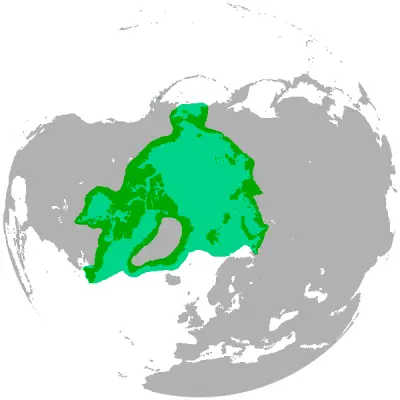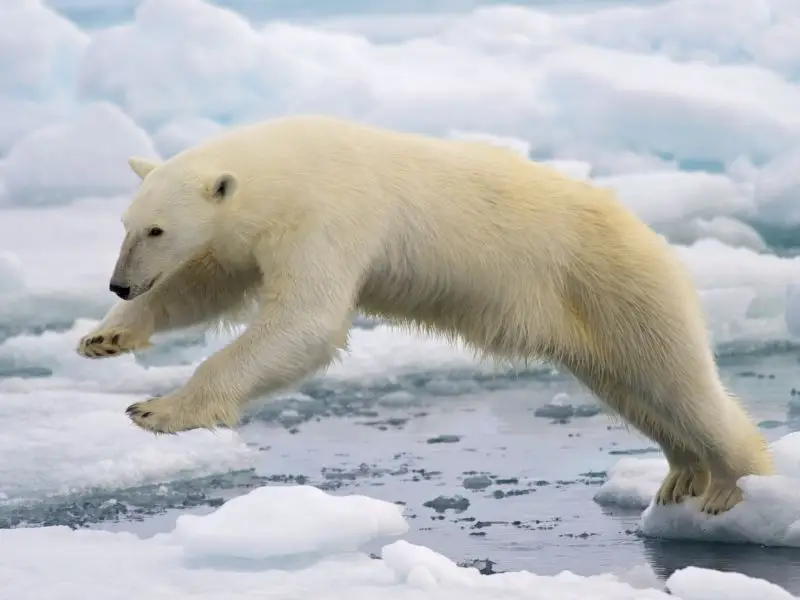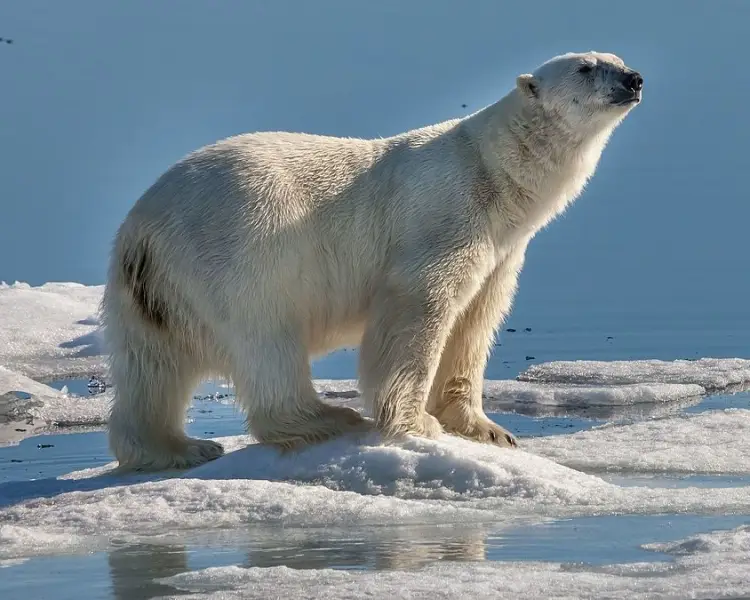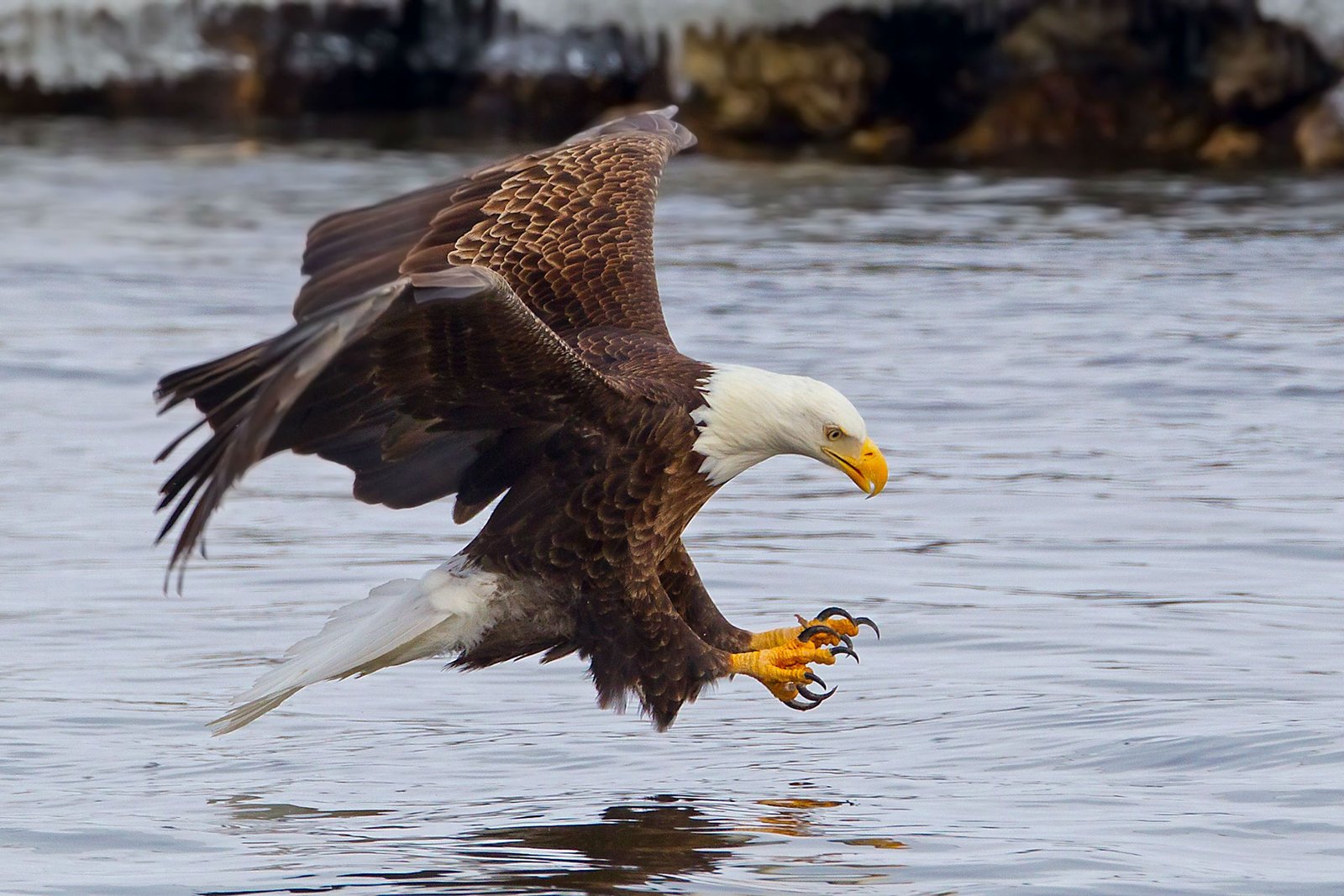The Polar bear (Ursus maritimus) is a hypercarnivorous bear found within the Arctic Circle, encompassing the Arctic Ocean, its surrounding seas and surrounding land masses. It is the largest extant bear species, as well as the largest extant land carnivore. Although it is the sister species of the Brown bear, it has evolved to occupy a narrower ecological niche, with many body characteristics adapted for cold temperatures, for moving across snow, ice, and open water, and for hunting seals, which make up most of its diet. Although most Polar bears are born on land, they spend most of their time on the sea ice. Their scientific name means “maritime bear” and derives from this fact. Because of their dependence on sea ice, Polar bears are classified as marine mammals. For thousands of years, the Polar bear has been a key figure in the material, spiritual, and cultural life of circumpolar peoples, and these bears remain important in their cultures. Historically, the Polar bear has also been known as the “white bear”. It is sometimes referred to as the “nanook”, based on the Inuit term nanuq.
Appearance
Polar bears are both terrestrial and pagophilic (ice-living) and are considered marine mammals because of their dependence on marine ecosystems. They prefer the annual sea ice but live on land when the ice melts in the summer. They are mostly carnivorous and specialized for preying on seals, particularly ringed seals. Such prey is typically taken by ambush; the bear may stalk its prey on the ice or in the water, but also will stay at a breathing hole or ice edge to wait for prey to swim by. The bear primarily feeds on the seal’s energy-rich blubber. Other prey include walruses, beluga whales and some terrestrial animals. Polar bears are usually solitary but can be found in groups when on land. During the breeding season, male bears guard females and defend them from rivals. Mothers give birth to cubs in maternity dens during the winter. Young stay with their mother for up to two and a half years.
Distribution
Geography
- Continents : North America, Europe, Asia
- Countries : Canada, Norway, Russia, United States
- Regions : Labrador, Manitoba, Newfoundland
- Oceans : Arctic Ocean

The polar bear is considered a vulnerable species by the International Union for Conservation of Nature (IUCN) with an estimated total population of 22,000 to 31,000 individuals. Its biggest threats are climate change, pollution and energy development. Climate change has caused a decline in sea ice, giving the polar bear less access to its favoured prey and increasing the risk of malnutrition and starvation. Less sea ice also means that the bears must spend more time on land, increasing conflicts with humans. Polar bears have been hunted, both by native and non-native peoples, for their coats, meat and other items. They have been kept in captivity in zoos and circuses and are prevalent in art, folklore, religion and modern culture.
Taxonomy

Carl Linnaeus classified the polar bear as a type of brown bear (Ursus arctos), labelling it as Ursus maritimus albus-major, arcticus (‘mostly-white sea bear, arctic’) in the 1758 edition of his work Systema Naturae.[8] Constantine John Phipps formally described the polar bear as a distinct species, Ursus maritimus in 1774, following his 1773 voyage towards the North Pole.[4][9] Because of its adaptations to a marine environment, some taxonomists, such as Theodore Knottnerus-Meyer, have placed the polar bear in its own genus, Thalarctos. However Ursus is widely considered to be the valid genus for the species on the basis of the fossil record and the fact that it can breed with the brown bear










